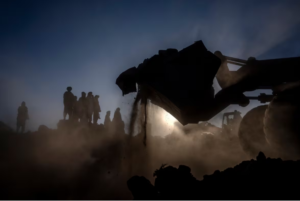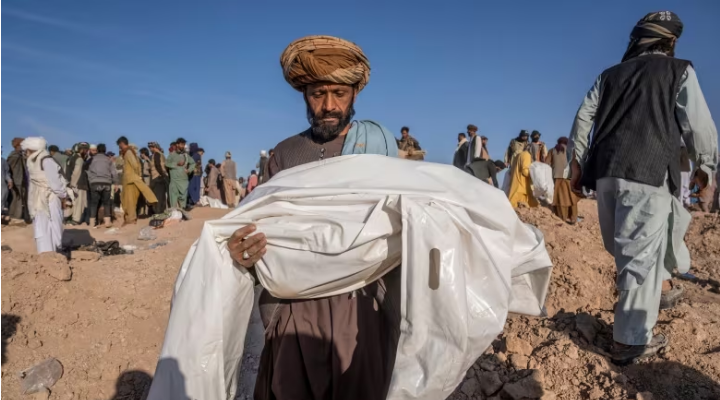Another strong earthquake shook part of western Afghanistan on Wednesday morning after an earlier quake killed more than 2,000 and flattened whole villages.The latest magnitude 6.3 earthquake was about 28 kilometres outside Herat, the capital of Herat province, and 10 kilometres deep, according to the U.S. Geological Survey.

Wednesday's quake has injured at least 80 people and a landslide has blocked the main Herat-Torghondi highway, Information Ministry spokesperson Abdul Wahid Rayan said.It also flattened all 700 homes in Chahak village, which was untouched by the tremors of previous days. There are mounds of soil where dwellings used to be. But there were no deaths initially reported in Chahak because people have taken shelter in tents this week, fearing for their lives as tremors continue to rock Herat.
Strong aftershocks
The epicentre of Saturday's quake was about 40 kilometres northwest of the provincial capital, and several aftershocks have been strong, including another of magnitude 6.3 on Saturday.Taliban officials said more than 2,000 had died across Herat after the earlier quakes. They subsequently said the quakes killed and injured thousands but didn't give a breakdown of casualties.
On a barren field in the district of Zinda Jan, a bulldozer removed mounds of earth to clear space for a long row of graves.”It is very difficult to find a family member from a destroyed house and a few minutes to later bury him or her in a nearby grave, again under the ground,” said Mir Agha, from the city of Herat, who had joined hundreds of volunteers to help the locals.
Aside from rubble and funerals after Saturday's devastation, there is little left of the villages in the region's dusty hills.In Naib Rafi, a village that previously had about 2,500 residents, people said almost no one was still alive other than men who were working outside when the quake struck. Survivors worked all day with excavators to dig long trenches for mass burials.
‘Severe psychological distress' among children
Nearly 2,000 houses in 20 villages were destroyed, the Taliban have said. The area hit by the quakes has just one government-run hospital.On Tuesday, UN deputy spokesperson Farhan Haq said Zinda Jan was the worst-affected area, with more than 1,300 people killed and nearly 500 people still reported missing.
He said UN satellite imagery also indicated extreme levels of destruction in the district of Injil.”Our humanitarian colleagues warn that children are particularly vulnerable and have suffered severe psychological distress from the earthquake,” he said.

